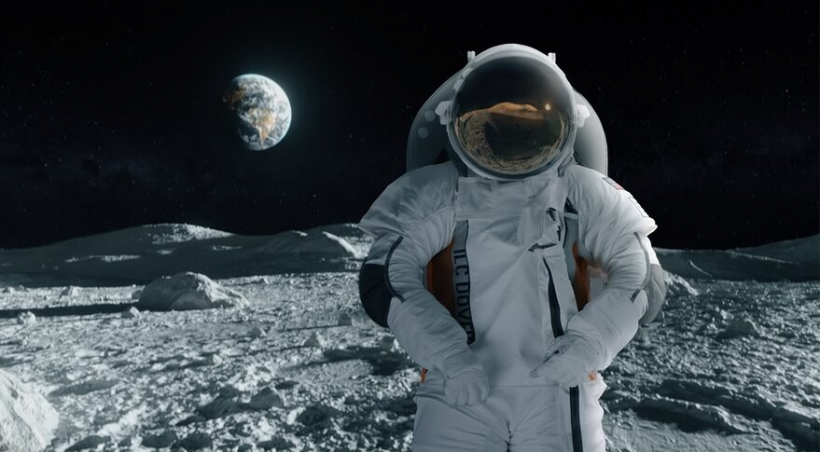NASA has given Collins Aerospace a $97.2 million contract to design a new spacesuit to replace the current Extravehicular Mobility Unit (EMU) suits used on the International Space Station. The task order was awarded on a sole-source basis, but NASA intends to maintain competition for future phases of the program. The contract includes testing of the suits on the ground and the option to conduct a spacewalk trial on the ISS by 2026.
This task order was given as part of NASA's Exploration Extravehicular Activity Services (xEVAS) contract. In June, NASA awarded xEVAS contracts to both Collins Aerospace and Axiom Space to create suits for use in both the ISS and Artemis lunar missions. In September, NASA awarded Axiom a $228.5 million task order to develop a spacesuit for the Artemis program. While both companies submitted proposals, NASA did not disclose the reason for selecting Axiom.
But, in a procurement filing from Dec. 15th, NASA stated that it awarded the task order for the ISS spacesuit to Collins Aerospace on a sole-source basis to keep both companies involved in the development of the suits. This paper is called a "Justification for an Exception to Fair Opportunity."
Spacesuit Procurement
As reported by SpaceNews and based on the procurement filing, having two providers for spacesuits allows for a safer and more reliable exploration of the ISS, the Moon, and beyond, as it provides NASA with more options and flexibility. The filing also mentioned that the xEVAS contract with Collins includes a guaranteed minimum, although the exact amount was not disclosed. This minimum meets NASA's requirements for exploration and excursion activities over the entire duration of the contract. Due to the extended time needed to develop the suit, known as contract line item number (CLIN) 1A in the contract, NASA argued that it had an "immediate need" to award the task order to Collins.
NASA notified both Collins Aerospace and Axiom Space of its intention to award the task order to Collins on a sole-source basis at the end of September and asked the companies to notify NASA of any issues they had with this decision. The remainder of the paragraph is redacted, so it is unclear if either company raised any objections or how NASA addressed any potential concerns, as reported by ScienceTimes.
NASA stated that it plans to competitively award future xEVAS task orders "whenever practical". The agency justified the sole-source award to Collins for CLIN 1A by stating that it would enable a strategy to reduce the technical and schedule risks associated with developing and executing EVA services to support NASA's mission needs. Additionally, the award is intended to increase NASA's ability to competitively award EVA services tasks in the future.
Like Axiom, Collins Aerospace has not publicly disclosed many technical details about its spacesuit. In an interview, Peggy Guirgis, the general manager of space systems at Collins Aerospace, mentioned that the competitive nature of the xEVAS contract limits what she can say about the suit. Although Axiom's task order is for a spacesuit to be used on the Artemis lunar missions, the procurement filing from NASA stated that the task order includes the option for Collins to demonstrate its suit on the ISS as an additional "delta effort".

Collins Aerospace has offered few technical details about its suit design, but a company official says the suit it is developing for the ISS under a sole-source task order could be adapted for lunar missions.
Technicalities of Space Suit Design
To Guirgis, the Collins spacesuit has several advantages over the current EMU suits, including a lower mass and fewer components, while also being able to accommodate a wider range of sizes. It also has improved carbon dioxide scrubbing capabilities and design changes to prevent water from entering the helmet. Guirgis mentioned that the biggest challenge to the project is the tight schedule, which calls for a critical design review in early 2024. Despite this, she stated that Collins is well-prepared and ready to start work on the project, saying "there's just a tremendous amount of work to get done".
Guirgis also addressed the work done on developing a spacesuit for the ISS will also support the creation of a version of the suit for the Artemis program that could be offered to NASA for the upcoming development of the xEVAS accord. She estimates that about 90% of the ISS suit could be adapted for use on the moon, with modifications needed for walking on the lunar surface and for the different thermal and dust conditions on the moon. Guirgis also mentioned that NASA has the option to award Collins a subsequent task order to continue the development of the Artemis suit.
Guirgis stated that they're going to be making progress from an Artemis perspective and that this approach allows NASA to maintain a competitive edge by having multiple options available for different missions, while also providing flexibility for the ISS. She emphasized that this approach allows NASA to choose which company to support for each mission, depending on its needs and requirements.
RELATED ARTICLE: Collins Aerospace, Axiom Space to Deliver NASA Spacesuits For Artemis Human Missions [Reports]
Check out more news and information on Spacesuits in Science Times.














